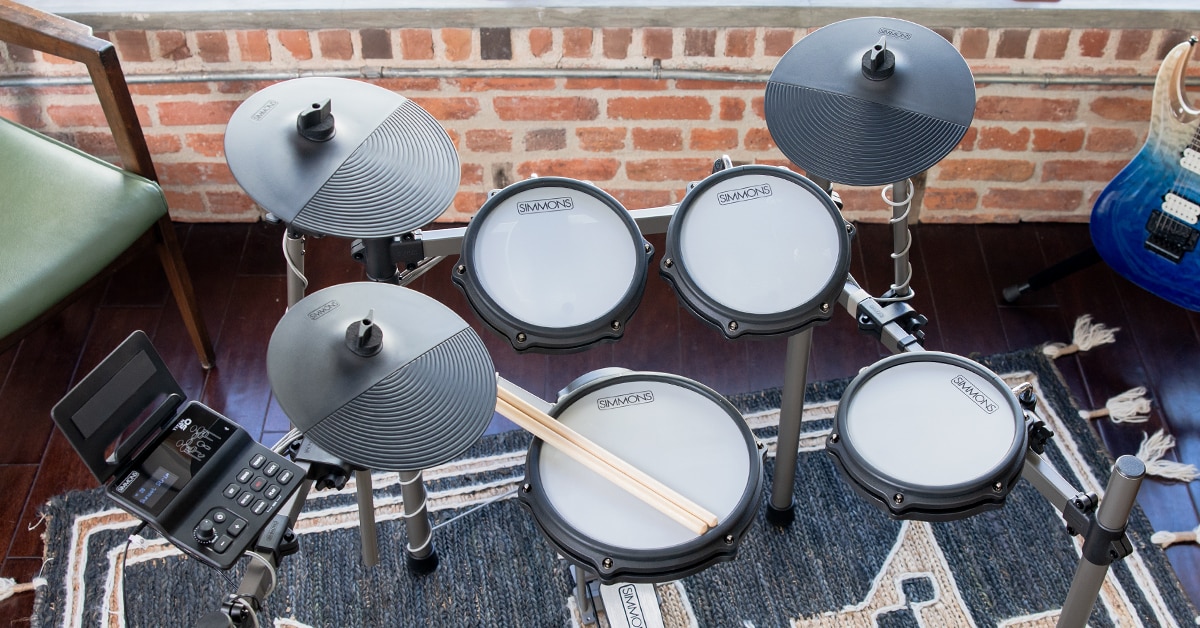The sound of so many 1980s new wave hits is also the sound of Simmons drums. Massive acts of the era—such as Duran Duran and Spandau Ballet—used the innovative, synth-like Simmons SDS-V kit to craft dance beats and propulsive grooves, or add surprising percussion volleys to songs that played over and over on terrestrial radio and MTV. In addition to the pop groups, some transcendent drummers, such as Neil Peart, Bill Bruford and Alex Van Halen, experimented with Simmons kits to expand the vocabulary of their percussive artistry.
Simmons is still innovating today. The brand new Titan 50 is a complete evolution and rethink of what an electronic kit can offer drummers of all skill levels. The Titan 50 delivers incredible sounds and all the comfy feel of an acoustic drum set. You get mesh pads that feel just like conventional drum heads, a rectangular rack and clamp system that keeps the pads in the positions you want them, and a bevy of practice tools and connectivity options (Bluetooth, USB, MIDI). The compact Titan 20 is an affordable kit that’s a great start for beginners, and it includes many of the features of the Titan 50.
Simmons product manager Jeff Laity oversaw the development of the Titan 50, and gives us an exclusive sneak peek at how Simmons advanced its electronic drum strategy, created the sounds, devised acoustic kit-like ergonomics, feel and more.
The HUB: In 1981, Simmons released the SDS-V, which was the first electronic drum kit. How has the perception and use of electronic drums evolved in those 40 years?
Jeff Laity: I think the early Simmons kits were driving the search for new sounds. At the time, musicians and bands were exploring unique sounds and creating new musical styles. Today, electronic drum kits have become a way for drummers to practice without making a lot of noise—even more so during the past two years, when people were spending a lot of time at home because of the pandemic. Drummers learned that electronic drum kits gave them the same sound and feel they loved about their acoustic kits, but in a way that didn’t annoy their families or get them evicted. As a result, current players seem more interested in traditional acoustic drum sounds than new and surprising ones—although we still have an SDS-V preset in the Titan 50 sound module.
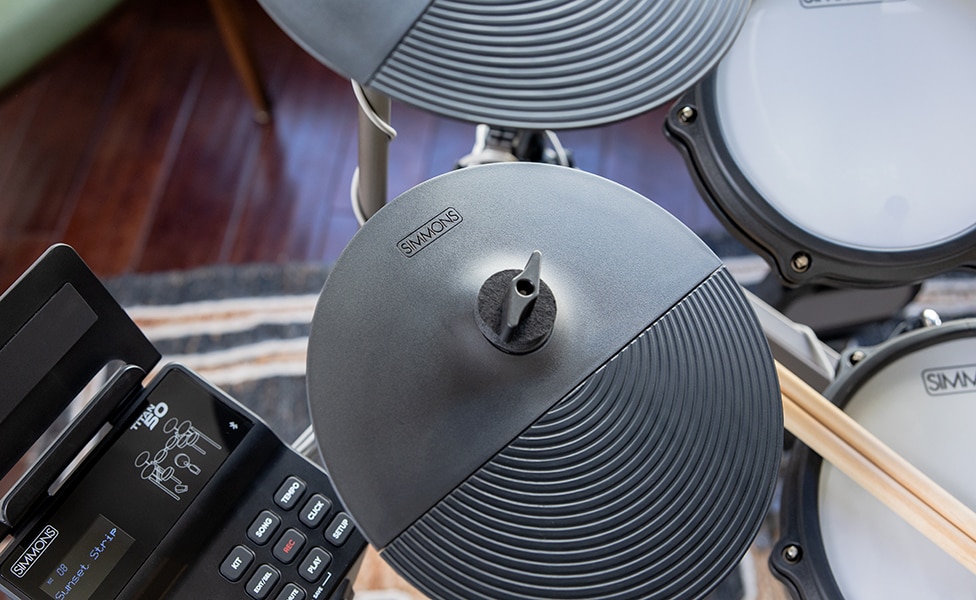
The HUB: The Simmons SD line of e-kits has been available for several years now. Did those models influence the design of the Titan 50?
JL: We had many years of experience building the SD kits, and we put all of those design insights and player feedback into the Titan 50. But, to be clear, the Titan 50 is a brand-new kit. Almost nothing is shared from previous Simmons models.
We understood the primary use of the Titan 50 would likely be as a practice kit, so our primary goal was to design something that sounds and feels great. We want acoustic drummers to sit down at the Titan 50 and feel like they are playing an acoustic kit.
The HUB: Could you tell us how the Titan 50 was designed to provide a playing experience that doesn’t feel significantly different from an acoustic kit?
JL: We used double-layer mesh on all the pads, so they feel like acoustic drum heads. We also we developed low-profile rims on the pads and included a 10" snare—both of which contribute to the feel acoustic players are accustomed to. Getting the snare drum just right took a lot of time, because we wanted the rim-shot detection to feel realistic and consistent. To achieve that, we gave the Titan 50 a dual-zone snare. When you play in the center of the snare, it's triggering one sound. When you play a rim shot, it plays a different sound. It was important to us that those two sounds triggered just right to emulate what you would hear on an acoustic snare. With e-kit cymbals, there’s always a tradeoff between feeling realistic and being quiet enough for practice, but when you hit the Titan 50 cymbals, they have the right amount of response and give.
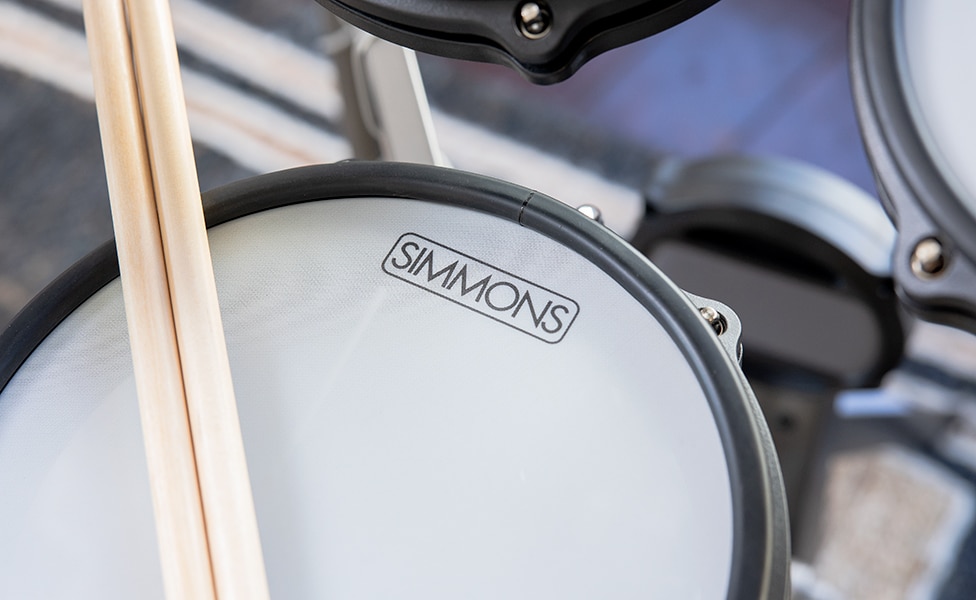
The HUB: How did you create the acoustic drum sounds for the Titan 50 module?
JL: We booked a week at London Bridge in Seattle—which is a famous studio that did a lot of early grunge records by bands such as Pearl Jam and Soundgarden—and recorded nothing but drums. We set up 22 different mics in various positions to capture every sound we might want, as well as to have a lot of flexibility during the mixes. We used some vintage microphones—such as Coles ribbon mics, which were used to record Ringo’s drums on many of the Beatles recordings—and even some "effect" mics that captured odd or intense sounds.
But rather than just record a bunch of different kits, we wanted to nail the sound of specific recordings and music styles. That goal influenced the drum kits we used, the way they were tuned, the heads we used, the microphones and mic positions—the entire signal chain. So, if a player wants a rock kit, or metal drums, or a jazz set, they can select a kit that sounds just like it was recorded and produced for a record in that particular style. For example, we produced our heavy rock kit to sound like the drums on a Foo Fighters record.
The HUB: Are there other types of drums included? Can the user edit the presets?
JL: Yes. In addition to great acoustic drum sounds, we have a library of electronic sounds in there—including classic ’80s Simmons kits—as well as world percussion. You can edit the sounds quite easily. If there's a kit you love, but you want to try a different snare drum on it, you can swap out snare sounds until you find one you like. You can swap cymbals. You can change the pitch and the damping of the drums—just like a real drum kit. There’s also a digital mixer built into the module. You can adjust the volume and panning of the sounds and process them with a compressor and reverb.
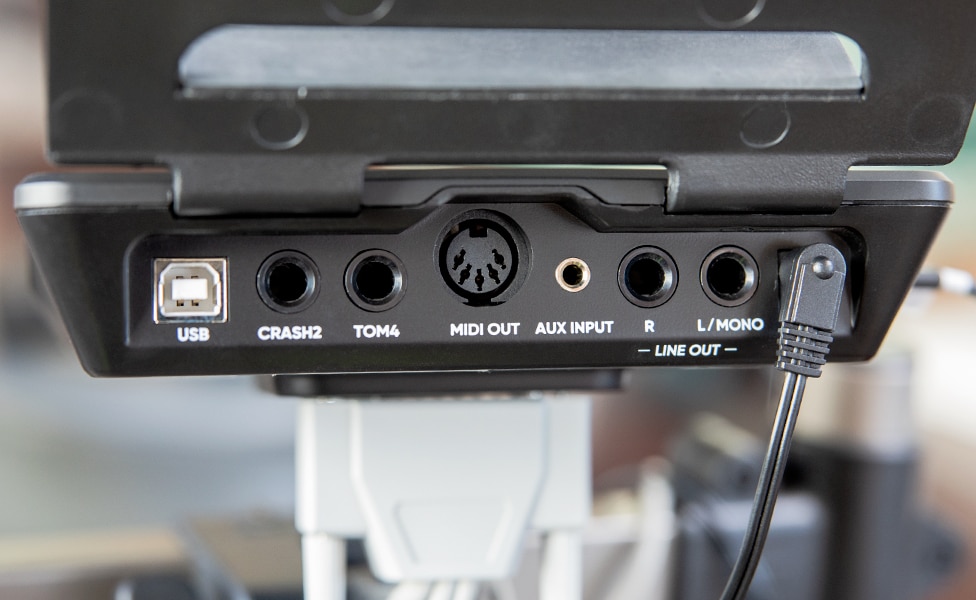
The HUB: How can the Titan 50 integrate with a home studio?
JL: The Titan 50 has Bluetooth, MIDI and USB connectivity built in. It’s very simple to plug a USB cable into your computer and use the Titan 50 as a MIDI controller for software instruments. The module also acts as a USB interface, so you can record the Titan 50 drum sounds and your performances right into a DAW and monitor everything through the module’s headphone jack or a set of speakers.
Bluetooth audio is great for setting up your phone or tablet and playing along with YouTube videos, music from your music library or different apps that allow you to play along and practice. We have some terrific practice tools built into the module and a Simmons app that lets you choose different kits, customize sounds, change the mix and use the practice tools in the module.
The HUB: Can you detail some of the practice tools?
JL: There’s a practice mode with a meter that shows you whether you're playing ahead of the beat, behind the beat or right on the beat. At the end of your practice session, it gives you a score to let you how you did. In addition, there are different exercises and songs you can play along with to help improve your chops.
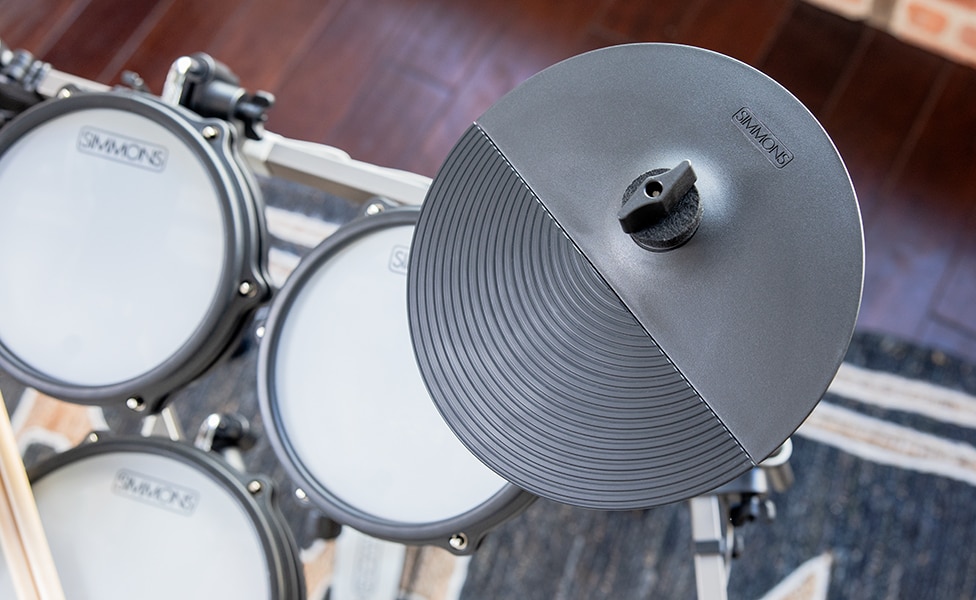
The HUB: What are the key differences between the Titan 50 and the new Titan 20?
JL: The Titan 20 is a compact and very affordable kit—especially for drummers just starting out. You still get the mesh pads, the rectangular rack that holds the pads without any slipping, the Simmons app and all of the connectivity. You get basically the same drum sounds in the Titan 20 as you do on the Titan 50, but the presets in the Titan 20 are mono instead of stereo, there are less of them available and the editing is far more comprehensive on the Titan 50. In addition, the kick pad on the Titan 20 is an all-in-one unit, whereas on the 50, it's a tower with a real beater pedal that you can swap out for your own pedal, or even add a double kick pedal.
The HUB: If someone wants to expand their Titan 50 in the future, what options are available to them?
JL: We have the Titan 50 Expansion Pack, which adds an additional tom and crash cymbal. It comes with clamps, a cymbal boom and cables, so you’ve got everything you need.





































































































































